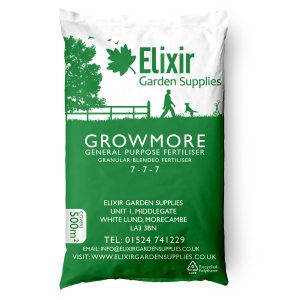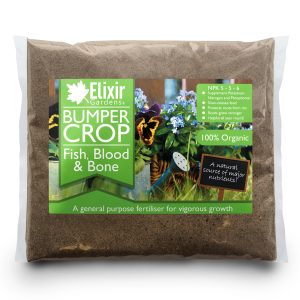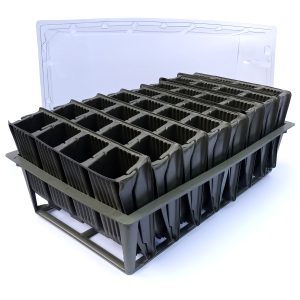A Guide to Vertical Planting
Are you looking for an alternative form of planting? Short on space or have an area that is unusable for any typical potted plants? Fancy sprucing up a doorway or entrance? Vertical planting may be the solution!
You may be wondering what vertical planting actually is. Well, quite simply, it is growing plants, vegetables, fruits and herbs upwards using some form of vertical structure.
There are actually quite a few benefits to vertical planting. It can help deter pests and encourage your plants to grow more successfully as they tend to have a greater airflow. It also helps minimise noise pollution and offers you some privacy in your garden.
Where to Start
First you will need to decide where you would like to position your vertical planting. Ideally a wall or fence that is sheltered from the wind and that gets a good amount of sun is best. It goes without saying that you should ensure your wall or fence is structurally sound before beginning. If you only have a shady space available, you can still plant a vertical arrangement, but be sure to choose the correct plants, such as Heuchera, Campanula, Viola, Pansy or Wallflower. Make sure any weeds growing on the structure have been cleared away and treated with a good Weedkiller a few weeks before you begin your vertical planting.


Materials
Next, choose your materials. This will depend on what you wish to plant, what your structure is, and how many and what type plants you would like to use. For a quick and easy planting idea, why not try our Hanging Flower Bags? They have 10 pre-cut planting slits, are strong and re-usable and can be attached to a wall using nails. If you would prefer individual planting that can be moved around, then you can attach a range of different Plant Pots to your wall, which gives you the opportunity to swap and change how you lay them out if you change your mind. For a living wall effect, space pots close together. You could even hang multiple rows of our Colour Hanging Baskets using rails or Hanging Basket Brackets.
If you don’t have a wall or fence you can use, you could grow a bean, clematis or sweet pea tepee using Bamboo Canes. Using either a large plant pot or the ground, use six to eight canes and push them down into the soil so they are sturdy in a circle with a diameter of 40cm – 50cm. You can leave one of the canes out if you are making it a hide for children so they have an entry way. Tie the canes together at the top using Garden Tying Tube. Plant one plant or seed per cane and watch them grow up the canes. You may need to gently tie the plants to the canes to train them. Don’t forget to water often and if you are growing peas or beans, harvest them regularly during the growing season to encourage them to produce more crops.
Choosing Your Plants
There are so many different options when it comes to choosing your plants.
You could use a range of different herbs to create your own herb garden mixed with smaller fruit and vegetable plants like Alpine Strawberries, Tomatoes, Spinach, Cress, Rocket or Lettuce; You could use lots of colourful hardy perennials such as Begonia, Liriope, Verbena, Petunia, Busy Lizzie and Ajuga mixed with some ornamental grasses.
Alternatively, you could add a variety of trailing plants and alpine plants like Ivy, Ferns, Sedum, Aubretia, Creeping Thyme and Saxifrages.
Choose plants with similar watering needs on each level if you can as this will make it easier to care for them. For year round planting, select mainly evergreens with pops of colour from hardy perennials when they are in season.
Look for a variety of different leaf shapes, textures and colours to make your vertical planting look attractive.


Maintenance
When planting up your pots, to ensure they retain sufficient water, consider using Water Retaining Crystals or Vermiculite mixed in with the compost.
Plant larger growing plants at the bottom and smaller growing at the top of your structure so that all your plants should get sufficient light.
Tidy your plants often so that they don’t start competing for space with each other. Ensure you water your plants every two to three days, then in summer water every day (or even more frequently if it is really dry and warm).
Water in the morning to help to prevent mildew, slugs and snails.
Apply a Tomato Feed Fertiliser once every few weeks during the spring and summer. Don’t forget to harvest your fruit, vegetables and herbs regularly during their growing seasons to encourage more crops to grow.
Share This Blog
Featured Products
-
Sale!Up to 30% OFF!
 Up to 30% OFF!
Up to 30% OFF!Organic Chicken Manure Pellets | Composted & Compressed Poultry Manure | Covers up to 700sq.m per 20kg Bag
£5.19 – £26.24 Select options This product has multiple variants. The options may be chosen on the product page -
Sale!Up to 30% OFF!
 Up to 30% OFF!
Up to 30% OFF!Growmore 7-7-7 All-Round Fertiliser | Balanced General Purpose Feed | 500g – 25kg | Treats up to 500m² per 25kg Bag
£4.19 – £27.74 Select options This product has multiple variants. The options may be chosen on the product page -
Sale!Up to 30% OFF!
 Up to 30% OFF!
Up to 30% OFF!Bumper Crop Fish Blood & Bone Meal | Multi-Purpose Organic-Based Fertiliser | 25kg bag covers up to 360sq. m when applied at 70gsm
£4.19 – £32.79 Select options This product has multiple variants. The options may be chosen on the product page -
Sale!Up to 25% OFF!
 Up to 25% OFF!
Up to 25% OFF!Black Recycled Plastic Deep Rose Plastic Pots | 1L – 7L
£4.49 – £727.99 Select options This product has multiple variants. The options may be chosen on the product page -
Sale!Up to 10% OFF!
 Up to 10% OFF!
Up to 10% OFF!Deep Rootrainer | Haxnicks Propagator System | Reusable 32 Cell Pack with Tray + Lid
£11.51 – £75.50 Select options This product has multiple variants. The options may be chosen on the product page -
Sale!Up to 30% OFF!
 Up to 30% OFF!
Up to 30% OFF!Magic Grow Tomato Feed | N.P.K 18-9-9
£5.24 – £20.99 Select options This product has multiple variants. The options may be chosen on the product page -
Sale!Up to 30% OFF!
 Up to 30% OFF!
Up to 30% OFF!High Nitrogen Liquid Plant Food | N.P.K 20-0-10 | 10L covers 2500m²
£5.24 – £20.99 Select options This product has multiple variants. The options may be chosen on the product page








